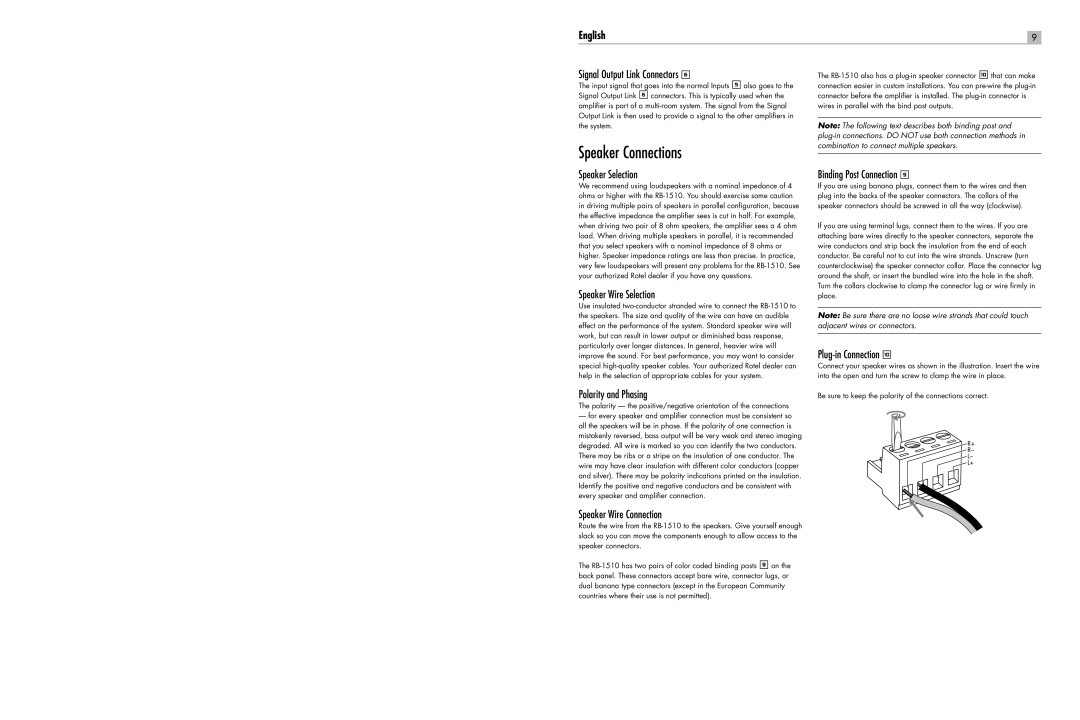
English | 9 |
Signal Output Link Connectors 6
The input signal that goes into the normal Inputs 5 also goes to the Signal Output Link 6 connectors. This is typically used when the amplifier is part of a
Speaker Connections
Speaker Selection
We recommend using loudspeakers with a nominal impedance of 4 ohms or higher with the
Speaker Wire Selection
Use insulated
Polarity and Phasing
The polarity — the positive/negative orientation of the connections
—for every speaker and amplifier connection must be consistent so all the speakers will be in phase. If the polarity of one connection is mistakenly reversed, bass output will be very weak and stereo imaging degraded. All wire is marked so you can identify the two conductors. There may be ribs or a stripe on the insulation of one conductor. The wire may have clear insulation with different color conductors (copper and silver). There may be polarity indications printed on the insulation. Identify the positive and negative conductors and be consistent with every speaker and amplifier connection.
Speaker Wire Connection
Route the wire from the
The
The
Note: The following text describes both binding post and
Binding Post Connection 9
If you are using banana plugs, connect them to the wires and then plug into the backs of the speaker connectors. The collars of the speaker connectors should be screwed in all the way (clockwise).
If you are using terminal lugs, connect them to the wires. If you are attaching bare wires directly to the speaker connectors, separate the wire conductors and strip back the insulation from the end of each conductor. Be careful not to cut into the wire strands. Unscrew (turn counterclockwise) the speaker connector collar. Place the connector lug around the shaft, or insert the bundled wire into the hole in the shaft. Turn the collars clockwise to clamp the connector lug or wire firmly in place.
Note: Be sure there are no loose wire strands that could touch adjacent wires or connectors.
Plug-in Connection 0
Connect your speaker wires as shown in the illustration. Insert the wire into the open and turn the screw to clamp the wire in place.
Be sure to keep the polarity of the connections correct.
R+
R–
L–
![]() L+
L+
